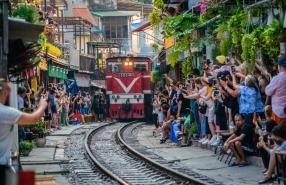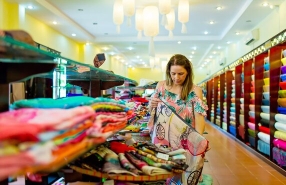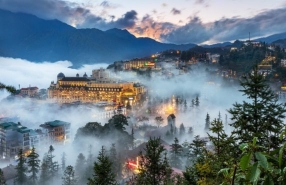Traditional Clothing Of Laos - Discover The Sinh Sarong

In Laos, the Sinh is not simply clothing but a reflection of tradition and daily life. This handwoven skirt, often called Sinh Laos, shows the beauty of Lao traditional clothing with patterns inspired by nature and spirituality. Worn by women at festivals, temples, or family events, the Sinh traditional dress Laos carries both elegance and cultural pride. Today it is widely seen as the Laos national costume, linking the past with modern identity. Learning about the Sinh is also a way to understand the values and artistry that shape Lao culture.
Traditional Clothing of Laos - Discover the Sinh Sarong
1. What is the Sinh - Laos Traditional Dress ?
The Laotian Sinh is considered one of the country’s oldest pieces of clothing. In early kingdoms, this hand-woven skirt served mainly as simple protection and everyday wear. With time, it turned into a cultural marker, closely tied to tradition and identity. The Sinh Laos is worn mostly by women. It is a long, straight skirt, wrapped tightly around the waist. There are no buttons or fastenings, which makes it easy to use. The fabric can be sturdy for work or soft and silky for special occasions. In rural areas it is often seen during farm work, while in towns it appears more during weddings, religious events, and festivals.
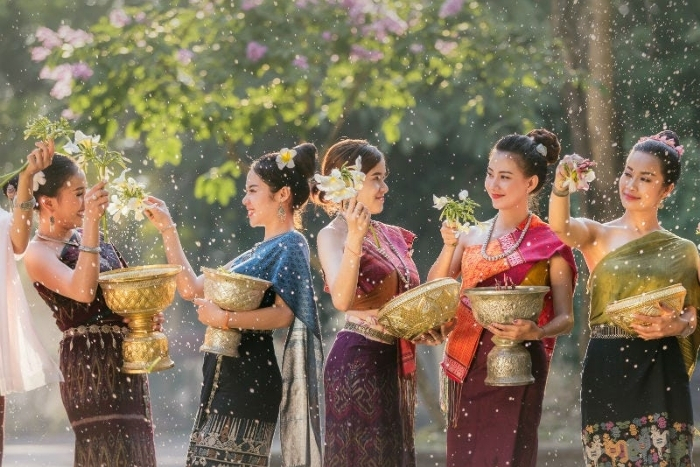
Every skirt carries meaning, sometimes inspired by nature or old beliefs. Even now, the Sinh traditional dress Laos remains visible across society and is passed down through families. It is not only practical but also expresses modesty and elegance. Mothers show daughters how to wear it properly and how to match colors with the right moment. For this reason, the Laos national costume is still alive today, linking past and present in daily life.
2. Cultural significance of the Sinh in Laos
The Sinh in Laos is more than just clothing. It is a reminder of where the country comes from and how traditions survive in daily life. People often say that when a woman wears a Sinh, she shows respect for her culture as much as for herself. The skirt reflects values of modesty and dignity, but also a quiet sense of elegance. In villages, it may be seen during farming or local markets. In towns, the same skirt appears again, this time during weddings, religious events, or official gatherings. That mixture of settings shows how flexible the garment has always been. What once served as simple attire has slowly become a cultural symbol, now widely recognized as part of Laos’s national dress.
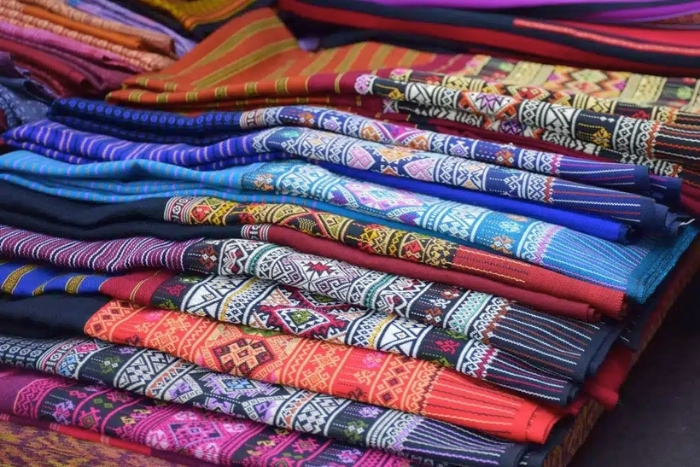
The meaning of the Sinh also runs inside families. Mothers explain to daughters how to wrap the fabric properly, or which colors fit a festival better than a day at school. These simple lessons make the garment feel less like fabric and more like a tradition being passed down. Even today, the Sinh Laos continues to connect the past with the present, keeping culture visible in everyday life rather than locked away in history.
3 What makes Sarong Laos special ?
The Sinh Laos may look simple, but its design hides layers of meaning. It is usually a tube-shaped skirt wrapped around the waist, an essential part of Lao traditional clothing. A traditional Sinh has three main sections. The hua sinh or waistband is plain and strong. The phuen sinh is the body of the skirt, often decorated with bright patterns. The tin sinh, the hem, is the most elaborate, filled with woven motifs that show the skill of the weaver.
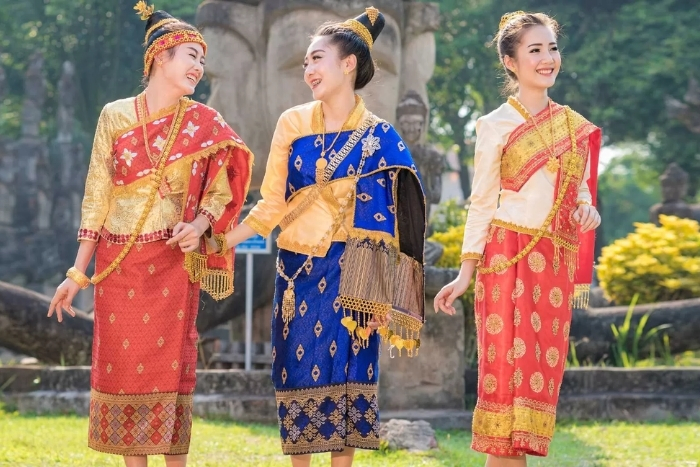
Fabrics play a central role. Cotton Sinh is common in rural life, where durability matters. Silk versions, often handmade, are popular for weddings, festivals, and ceremonies. They add elegance and status, showing why the Sinh traditional dress Laos is valued across generations. Modern weavers now mix materials to create skirts that are lighter and easier to wear, while still respecting tradition. Designs vary from region to region. Patterns may feature animals, flowers, rivers, or Buddhist symbols. These motifs are not only decorative but also carry cultural meaning, often linked to blessings or protection. With its symbolic design and fine craftsmanship, the Sinh continues to represent the Laos national costume, admired both locally and by visitors who wish to discover authentic Lao culture.
4. Different styles of the Sinh across Laos
The Sinh Laos keeps the same tube-skirt form throughout the country, yet its appearance changes widely from one region to another. These variations make the Sinh traditional dress Laos both simple in design and deeply diverse in expression. In the northern provinces, women often wear Sinh in darker shades such as indigo, black, or deep red. The fabrics are heavier and more practical, suitable for the cooler climate and farming life. Geometric patterns dominate the weaving, many of them inspired by rivers, mountains, or village symbols. Each motif ties the skirt closely to the surrounding landscape and local traditions.
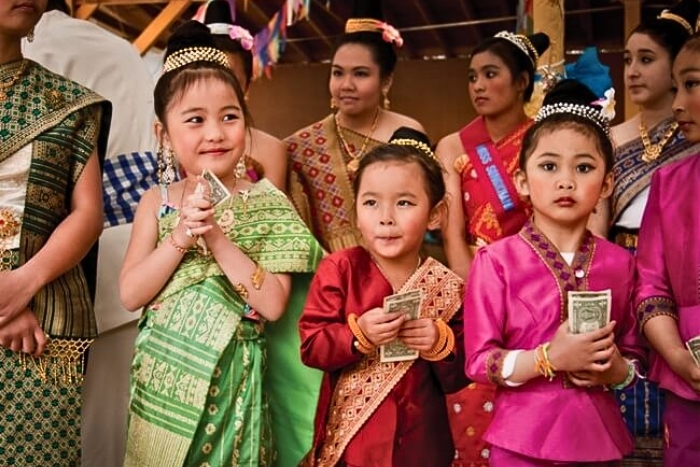
Moving to central Laos, the skirts become lighter and softer. Colors shift to bright tones like yellow, pink, or green, while the motifs are smaller and less complex. This creates an elegant but understated look. These versions are often chosen for temple visits, family ceremonies, and formal gatherings, where refinement matters more than boldness. In the south, the Sinh takes on a more striking appearance. Fabrics show strong contrasts, with embroidery that can include flowers, animals, or Buddhist imagery. These lively designs are especially visible during weddings and major festivals, when cultural pride is displayed most openly. Despite the regional differences, all these variations belong to Lao traditional clothing. Together they form the image of the Laos national costume, one garment that unites diverse communities while still reflecting local identity.
5. Where to see and buy a Sinh in Laos ?
Lao traditional clothing can be seen everywhere, not only at big festivals. Walk through a morning market in Vientiane or Luang Prabang and many women still wear the skirt as daily clothing. That is why the Sinh traditional dress Laos feels alive, not just a costume in museums. Buying one is not difficult. Markets are the easiest option. In Luang Prabang night market, rows of stalls sell handwoven skirts. Prices change depending on the fabric, but most are affordable. The morning market in Vientiane has a similar variety, with sellers explaining patterns and colors.
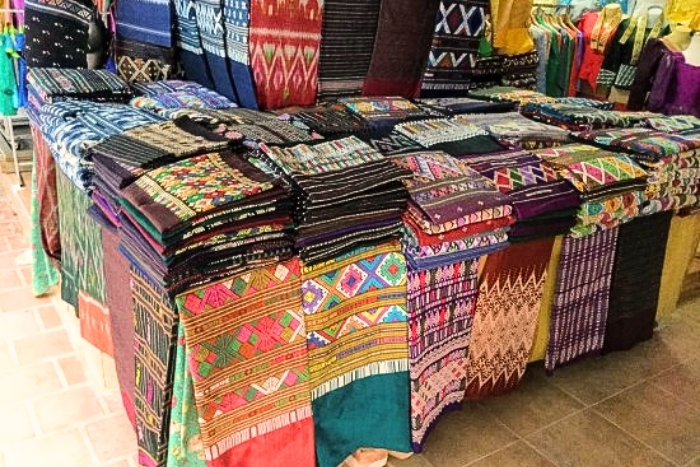
Another way is to visit weaving villages. Ban Xang Khong near Luang Prabang or Ban Phanom are known for their looms. Visitors can watch the work step by step, then buy directly from the families. The connection feels stronger when the maker tells a story about the motif. Shops in big towns also sell high-quality silk versions. Some follow fair-trade standards and use natural dyes. These are more expensive, but the quality is clear. No matter the choice like village, market, or boutique, the Sinh Laos stays part of Lao traditional clothing and represents the Laos national costume in daily life.
The Sinh Laos is more than traditional clothing; it is a living symbol of identity. For centuries, this skirt has reflected values of modesty, respect, and beauty in everyday life and ceremonies. From the darker tones of the north to the colorful patterns of the south, each style of the Sinh traditional dress Laos carries meaning linked to family and culture. Travelers who see or buy a Sinh discover more than fabric - they connect with heritage that continues today. Recognized as the Laos national costume, the Sinh remains at the heart of Lao traditional clothing. With Autour Asia - local travel agency in Laos, explore this tradition more deeply and experience the culture where it lives.
The Sinh Laos is worn primarily by women in Laos. It is found in daily life, especially in the countryside, but also during official ceremonies in cities. Lao traditional clothing is worn at weddings, religious festivals, and even in some schools and government offices. Each traditional Lao skirt embodies both elegance and the continuity of traditions.
A 14-day tour of Laos offers a comprehensive overview of the country. The itinerary crosses Vientiane, Vang Vieng, and Luang Prabang, while also including unique sites such as the Plain of Jars, the Pak Ou Caves, and the Kuang Si Falls. The program emphasizes meeting local people, discovering traditional villages, and experiencing diverse natural landscapes. This trip to Laos combines culture, nature, and authenticity for a complete immersion.
A 7-day in central Laos allows you to discover the Plain of Jars, the Khammouan Caves, the turquoise Kong Leng Lake, as well as the temples and markets of Savannakhet. Explore the Plain of Jars in Xieng Khouang for its unique and mysterious landscape, explore caves like Tham Khoun Xe in Khammouan Province, and relax at Kong Leng Lake, where the turquoise waters offer a moment of calm. Visiting Laos, strolling through the Savannakhet market or visiting That Ing Hang Pagoda also offers a glimpse of the local cultural atmosphere.
Related travel guide
Other similar articles
CUSTOMIZABLE BY LOCAL EXPERTS
Personalized trip at the original price!
REFUND GUARANTEE
We believe in our work and promise to give you money back.
GOOD PRICE / QUALITY
95% satisfied more than expected!
24/7 LOCAL SUPPORT
We are always available online to provide assistance at any time.
Most read articles
Autour Asia is highly recommended on
Embracing the mission of "Satisfied more than expected" and providing authentic experiences, we have received numerous recommendations on reputable travel forums:














